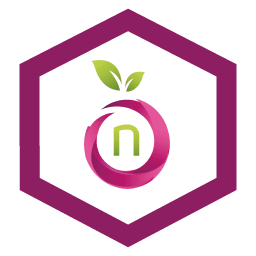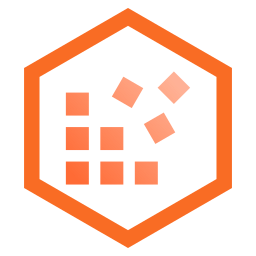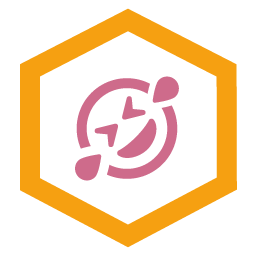10 Effective Brainstorming Techniques to Try in 2025
In today's competitive landscape, the quality of your ideas directly shapes your success. Yet, many teams rely on the same outdated 'let's just throw ideas at the wall' approach, often leading to stale results, disengaged participants, and missed opportunities. True breakthroughs are not accidental; they are cultivated through structured creativity. This guide moves beyond generic advice to explore 10 powerful brainstorming techniques, each designed for specific challenges and team dynamics.
Whether you're a startup founder wrestling with a product name, a manager looking to solve a complex operational problem, or a creative professional trying to break through a mental block, understanding these diverse methods is crucial. We will provide a deep dive into how each technique works, its unique pros and cons, and actionable tips for implementation. You will learn not just what these techniques are, but when and how to deploy them effectively to transform your ideation sessions from chaotic free-for-alls into engines of innovation.
By mastering a variety of these structured brainstorming techniques, you can ensure your next session produces not just more ideas, but better, more actionable ones. This curated list will equip you with the practical tools needed to tackle any creative challenge with confidence and precision.
1. Traditional Brainstorming
Often called "Osborn's Method," traditional brainstorming is the foundational technique from which many others have evolved. Developed by advertising executive Alex Osborn in 1953, its core principle is simple but powerful: defer judgment. The primary goal is to generate a high volume of ideas spontaneously, emphasizing quantity over quality in the initial phase. A group gathers to voice any and all thoughts related to a specific problem or topic, with one person recording every suggestion.
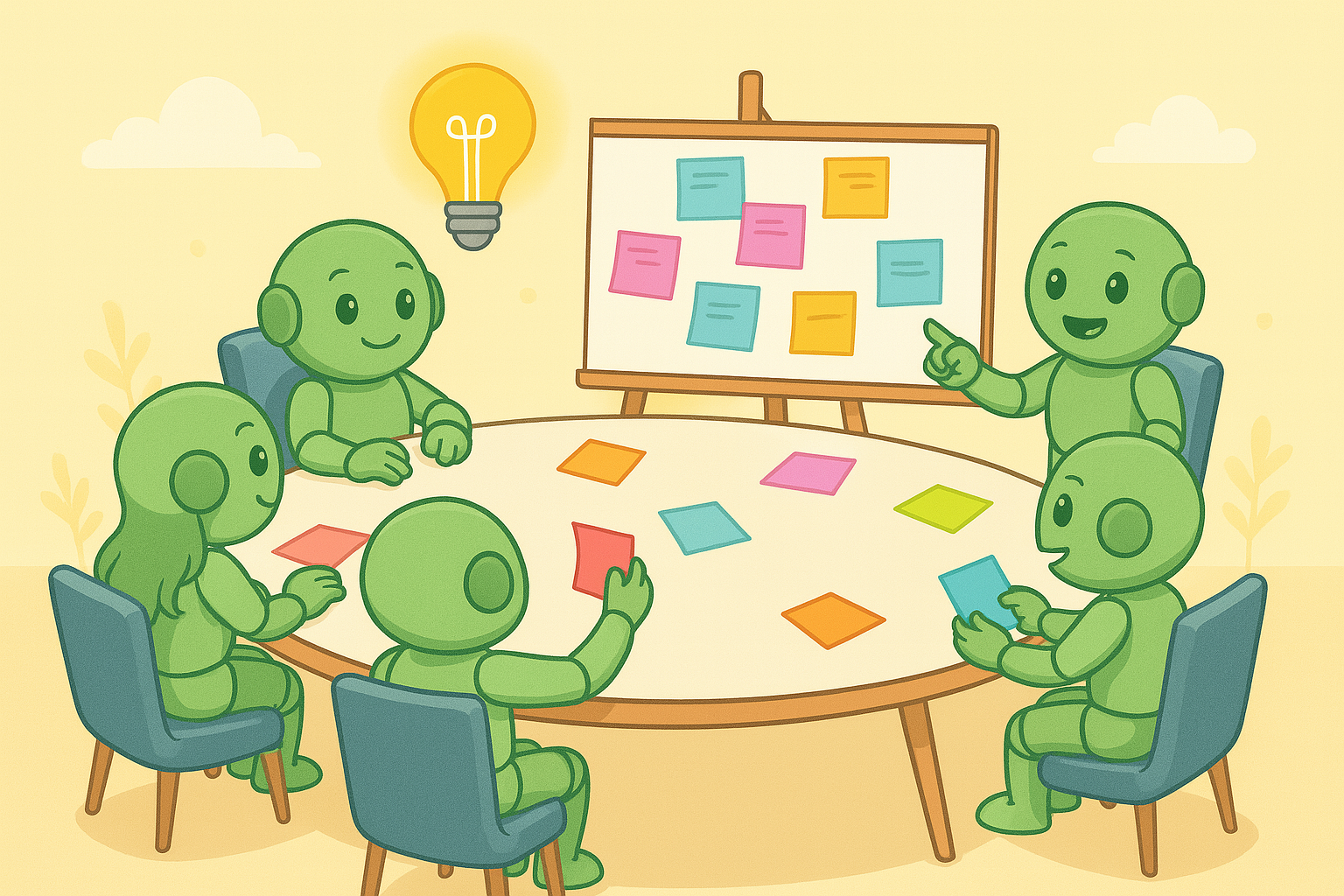
This method's strength lies in its simplicity and its ability to create a rapid, high-energy flow of diverse concepts. Evaluation and refinement are postponed, creating a psychologically safe space that encourages participants to share wild or unconventional ideas without fear of immediate criticism.
How to Implement It Effectively
To run a successful traditional brainstorming session, structure is key. Appoint a facilitator to guide the conversation, enforce the rules, and keep the energy positive. All ideas should be written on a whiteboard or large paper visible to everyone. This visual record prevents repetition and helps participants build upon each other's contributions, a process Osborn called "hitchhiking."
Actionable Tips:
- Set Clear Boundaries: Keep sessions focused and energetic by setting a time limit, typically between 15 and 45 minutes.
- Optimize Group Size: Aim for 6-8 participants to ensure everyone has a chance to contribute without the group becoming chaotic.
- Enforce Core Rules: Remind everyone of the four essential rules: defer judgment, encourage wild ideas, build on the ideas of others, and go for quantity.
2. Mind Mapping
Mind mapping is a powerful visual brainstorming technique that mirrors the brain's natural way of thinking: radiantly. Popularized by author and consultant Tony Buzan, this method organizes information hierarchically around a central concept. Ideas branch out from the middle in a non-linear, tree-like structure, using keywords, colors, and images to connect thoughts and stimulate new associations. It engages both the logical and creative hemispheres of the brain, making it one of the most effective brainstorming techniques for organizing complex information.
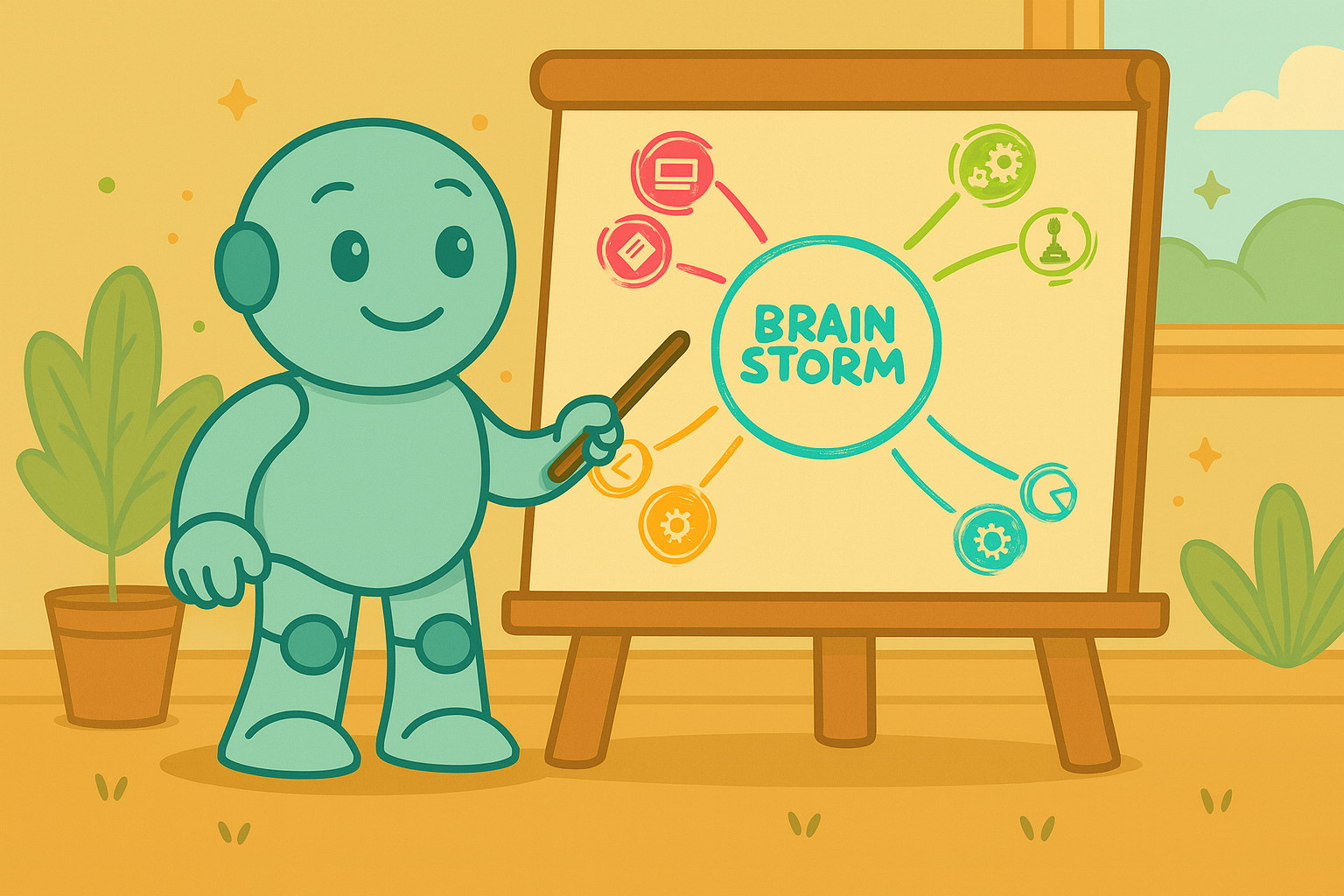
The strength of mind mapping lies in its ability to provide a clear, comprehensive overview of a topic on a single page. This visual clarity helps identify relationships between disparate ideas and uncovers deeper insights that linear note-taking might miss. Companies like Boeing have famously used mind mapping for complex aircraft design projects, while educational institutions use it for curriculum planning.
How to Implement It Effectively
To begin, place your central problem or topic in the center of a blank page, preferably represented by an image. From this central idea, draw main branches for your primary themes or categories. Sub-branches can then extend from these, moving from general concepts to more specific details. Using different colors for each main branch helps visually distinguish different trains of thought, making the map easier to read and remember.
Actionable Tips:
- Use a Central Image: Start with a strong, clear image or keyword at the center to anchor your focus.
- Color-Code Your Branches: Assign a unique color to each primary branch to improve organization and recall.
- Keep Text Brief: Use single keywords or short, impactful phrases instead of long sentences to keep ideas flowing quickly.
- Incorporate Symbols and Images: Add small drawings and symbols to make your mind map more memorable and engaging.
3. SCAMPER Technique
The SCAMPER technique is a structured brainstorming method that uses a checklist of seven idea-spurring prompts to foster innovation. Developed by Bob Eberle, this framework guides you to look at an existing product, service, or process from seven different angles: Substitute, Combine, Adapt, Modify, Put to another use, Eliminate, and Reverse. It is one of the most effective brainstorming techniques for improving something that already exists.
This approach provides a focused yet creative pathway, preventing ideation sessions from becoming too broad or abstract. For instance, Dyson's bagless vacuum can be seen as an application of the "Eliminate" principle (removing the bag), while Netflix's evolution from DVDs to streaming embodies principles like "Substitute" and "Adapt" to transform its service delivery model.
How to Implement It Effectively
To apply the SCAMPER method, you start with a specific focus, such as a product, a marketing strategy, or an internal process. You then systematically work through each of the seven categories, asking targeted questions to generate new ideas. For example, under "Combine," you might ask, "What can we merge with our product to enhance its value?" This structured questioning forces you to move beyond obvious solutions.
The infographic below summarizes the core components and benefits of using the SCAMPER framework.
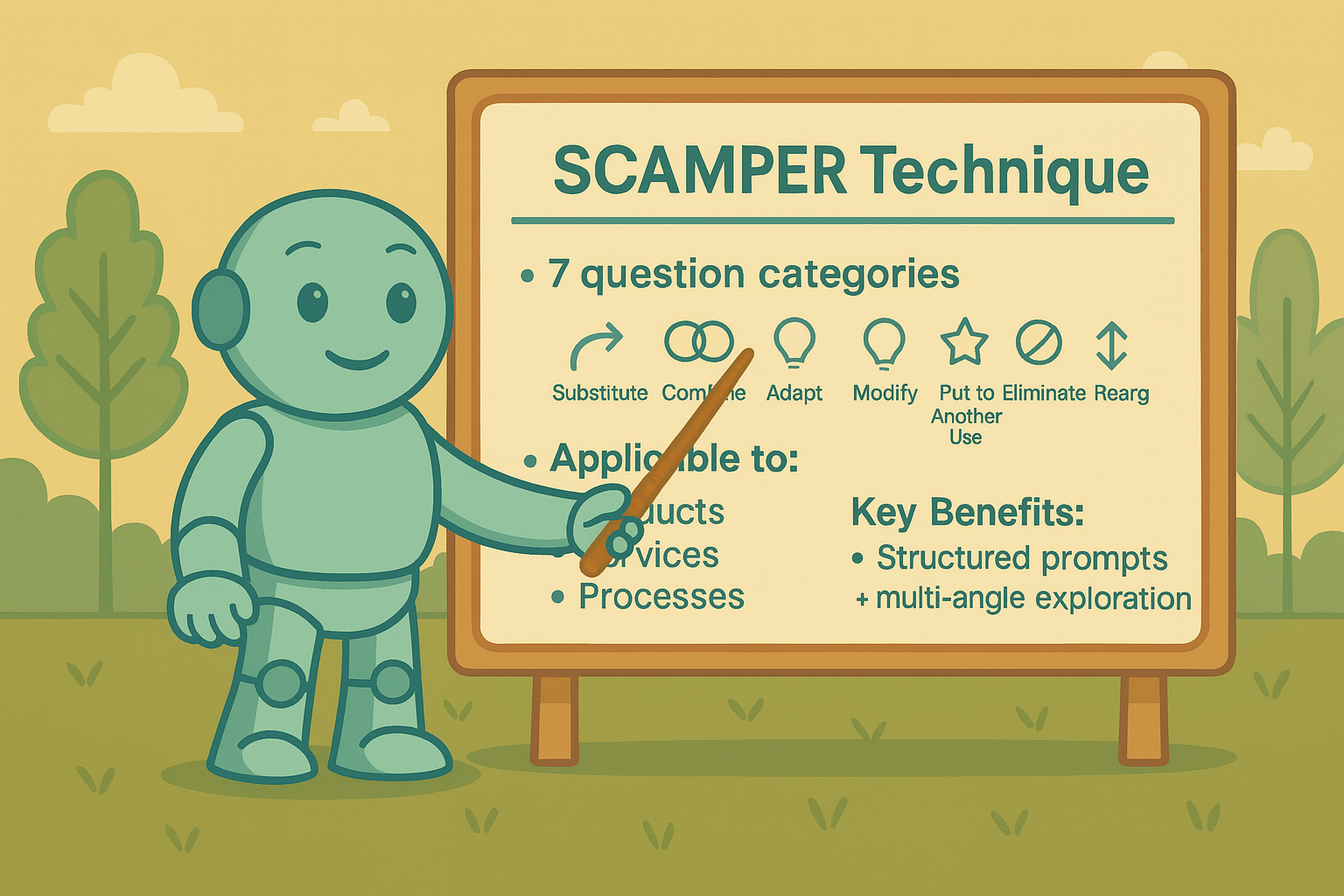
The visualization highlights how SCAMPER's structured prompts enable multi-angle exploration across products, services, and processes. To explore how you can use different methods like SCAMPER for specific tasks, you can learn more about naming inspiration on namerobot.com.
Actionable Tips:
- Be Selective: You don't need to use all seven prompts. Focus on the categories most relevant to your challenge.
- Ask Specific Questions: Instead of just "Modify," ask "How can we modify the customer experience to make it faster?"
- Document Everything: Capture every idea generated under each prompt before moving to evaluation. This prevents premature judgment.
4. Brainwriting (6-3-5 Method)
Brainwriting is a silent, structured alternative to verbal brainstorming that democratizes idea generation by minimizing social pressures and dominant personalities. The most famous variation is the 6-3-5 Method, developed by German marketing expert Bernd Rohrbach. Its name describes the process: 6 participants each write down 3 ideas in 5 minutes. This cycle repeats six times, with participants passing their sheets to the right after each round to build upon the previous person's concepts.
This methodical approach ensures equal participation and can generate an impressive 108 ideas in just 30 minutes. It's an effective technique for introverted team members and prevents "groupthink" by allowing for individual reflection before group influence. Architecture firms, for instance, use it for rapid concept development, while Toyota has integrated similar principles into its continuous improvement culture.
How to Implement It Effectively
Success with the 6-3-5 method hinges on clear instructions and strict timekeeping. Provide each of the six participants with a worksheet pre-formatted with a grid. The facilitator's role is to clearly state the problem, manage the 5-minute rounds, and signal when to pass the papers. After the writing phase, the group can discuss, clarify, and cluster the generated ideas. For more insights on how to foster collaborative creativity, you can learn more about being creative together on namerobot.com.
Actionable Tips:
- Use Specific Prompts: Frame the problem as a clear question (e.g., "How might we reduce customer support wait times?") to focus the idea generation.
- Prepare Materials: Ensure everyone has a pre-made worksheet and a pen. For remote teams, use a shared digital whiteboard with individual frames.
- Maintain Silence: Enforce a "no talking" rule during the writing rounds to protect individual thought processes and prevent premature judgment.
5. Reverse Brainstorming
Instead of asking how to solve a problem, reverse brainstorming flips the script and asks, "How could we cause this problem?" or "How could we make this situation worse?" This counterintuitive brainstorming technique is exceptionally powerful for identifying potential failures and hidden obstacles before they occur. By focusing on creating or exacerbating an issue, teams can uncover root causes and vulnerabilities that might otherwise be overlooked.
This method shines when teams are stuck, facing recurring issues, or need to preemptively troubleshoot a new project. For instance, Southwest Airlines built its customer-centric model by identifying everything that makes flying unpleasant and then doing the opposite. Similarly, safety training programs often use this technique to pinpoint all the ways an accident could happen, leading to more robust prevention strategies.
How to Implement It Effectively
The process involves two main phases: problem creation followed by solution generation. First, the facilitator presents the reverse prompt, encouraging participants to list as many ways as possible to cause the target problem. In the second phase, the group reviews these negative ideas and methodically "reverses" them into actionable, positive solutions. This structured approach helps transform critical analysis into constructive innovation.
Actionable Tips:
- Frame the Reverse Question: Start with a clear, negative prompt like, "How can we ensure our product launch fails completely?" or "What would make our customer service the worst in the industry?"
- Embrace Exaggeration: Encourage wild and even humorous negative scenarios. Over-the-top ideas can often reveal significant underlying assumptions or weaknesses in a system.
- Dedicate Time for Reversal: Do not rush the final step. Thoughtfully converting the identified problems into concrete solutions is where the real value of this brainstorming technique lies.
6. Starbursting
While most brainstorming techniques focus on generating answers, Starbursting flips the script by concentrating entirely on generating questions. This method systematically explores a topic by asking questions rather than immediately seeking solutions. It begins with a central idea or problem placed in the middle of a six-pointed star. Each point of the star represents a question word: Who, What, When, Where, Why, and How.
The power of this technique lies in its ability to ensure a comprehensive evaluation of a topic before jumping to conclusions. By focusing on inquiry, teams can uncover hidden assumptions, identify potential roadblocks, and define the scope of a project with much greater clarity. Project managers often use it for risk assessment, while market research teams employ it to plan product launches thoroughly.
How to Implement It Effectively
To begin a Starbursting session, draw a large six-pointed star and write your topic in the center. Dedicate time to each point of the star, brainstorming as many questions as possible for each category (Who, What, etc.). The critical rule is to resist the temptation to answer the questions during this phase; the goal is pure inquiry. Only after generating a comprehensive list should the group begin to prioritize and discuss the questions.
Actionable Tips:
- Define the Center: Start with a clearly defined and agreed-upon topic or idea at the center of your star.
- Generate Systematically: Move around the star point by point, generating multiple questions for each category before moving to the next.
- Postpone Answers: Strictly enforce the "questions only" rule during the generation phase to maintain focus and encourage deep inquiry.
- Prioritize for Action: After the brainstorming, review and prioritize the questions to determine which ones will best guide the next steps of your project.
7. Random Word Technique
The Random Word Technique is a powerful lateral thinking exercise designed to shatter conventional thought patterns and force creative connections. Popularized by pioneers like Edward de Bono, this method involves selecting a completely random, unrelated word and using it as a stimulus to generate fresh ideas for a specific problem. By forcing the brain to find associations between the challenge and the random word, you can bypass logical, linear thinking and uncover truly innovative solutions.
This method's effectiveness comes from its ability to introduce an unexpected element, compelling participants to explore new mental pathways. It’s particularly useful when a team feels stuck or when existing ideas are too predictable. For example, the invention of Velcro was famously inspired by observing how burr seeds (a random natural element) clung to fabric, demonstrating the power of forced association.
How to Implement It Effectively
To begin, clearly define your problem or challenge. Next, generate a random word by opening a dictionary to a random page, using an online generator, or drawing from a pre-made deck of word cards. Once you have your word, list all its attributes, functions, and associated concepts. Then, systematically try to connect each of these aspects back to your initial problem, asking "How can this attribute help solve our challenge?"
Actionable Tips:
- Use a Word Generator: Use a dedicated random word generator or a physical dictionary to ensure the word is truly random and not influenced by subconscious bias.
- Explore Every Facet: Don't just consider the word's primary definition. Analyze its metaphors, textures, sounds, and cultural connotations. This diversity can be a rich source of inspiration. Learn more about how the diversity of languages can benefit inspiration on namerobot.com.
- Embrace the Absurd: The most valuable connections often arise from seemingly impossible or nonsensical links. Don't dismiss an idea just because it sounds strange at first; instead, explore where it leads.
8. Nominal Group Technique
The Nominal Group Technique (NGT) is a structured brainstorming method designed to balance individual ideation with collaborative decision-making. Developed by Andre Delbecq and Andrew Van de Ven, this process ensures all participants contribute equally, preventing more vocal members from dominating the session. It combines silent, independent idea generation with a round-robin sharing process, followed by group clarification and a final, ranked voting phase.
This method is highly effective for sensitive topics or when a clear, prioritized outcome is necessary. By structuring participation, NGT builds consensus and generates a well-vetted list of ideas that already have group buy-in. It is one of the most reliable brainstorming techniques for achieving a democratic and actionable result.
How to Implement It Effectively
Successful implementation of the Nominal Group Technique requires a facilitator who can guide the group through its distinct phases. First, participants silently write down their ideas. Next, each person shares one idea at a time in a round-robin fashion until all ideas are listed on a central board. The group then discusses each idea for clarification before a final, often anonymous, vote is held to rank the priorities.
Actionable Tips:
- Clarify, Don't Debate: During the discussion phase, the focus should strictly be on understanding each idea, not on critiquing or evaluating its merit.
- Use Anonymous Voting: Employ a secret ballot or anonymous digital tool for ranking to minimize peer pressure and reduce the risk of bias.
- Allocate Time Wisely: Give sufficient time for each stage, especially the initial silent generation phase, to allow for deep and considered thought.
9. Role Storming
Role storming is a creative brainstorming technique where participants step into someone else’s shoes to generate ideas. By assuming a different persona, such as a customer, a competitor, a historical figure, or even a fictional character, individuals can break free from their personal biases and entrenched ways of thinking. This empathic approach encourages exploring a problem from diverse, often unexpected, viewpoints.
This method’s power comes from its ability to unlock new perspectives and challenge assumptions. It’s particularly effective for user-centric problems, as seen when design firms adopt customer roles to refine user experiences or when software companies use persona-based brainstorming for feature development. Famously, Disney has used a similar method by asking, "What would Walt do?" to align with its foundational vision.
How to Implement It Effectively
To begin a role storming session, clearly define the problem and then assign specific roles to each participant. These personas should be directly relevant to the challenge you are trying to solve. Provide a brief but clear profile for each role, outlining their motivations, needs, and pain points to help participants fully embody their character.
Actionable Tips:
- Choose Relevant Roles: Select personas that offer a distinct and valuable perspective on your problem, such as "the skeptical CFO," "the enthusiastic new user," or "the frustrated support agent."
- Encourage Full Immersion: Use simple props or name cards to help participants stay in character. Encourage them to adopt the persona's mindset and vocabulary.
- Rotate Perspectives: After a set time, have participants switch roles. This allows the group to analyze the problem from multiple angles and build upon ideas generated from previous personas.
10. Rapid Ideation
Rapid ideation is a high-energy brainstorming technique designed to generate the maximum number of ideas in a strictly limited timeframe. By forcing participants to work under intense time pressure, typically just one to two minutes per idea, this method effectively bypasses the internal critic. The focus is purely on quantity and speed, encouraging immediate, instinctive responses rather than carefully considered solutions. This approach is popular within the design sprint methodology and startup incubators for its ability to quickly produce a vast pool of raw concepts.
The primary strength of rapid ideation is its power to break through creative blocks and generate momentum. The fast pace prevents overthinking and analysis paralysis, tapping into a more intuitive stream of thought. It is particularly effective in early-stage development, such as when an advertising agency is developing initial campaign concepts or a game developer needs to brainstorm a wide array of potential gameplay mechanics.
How to Implement It Effectively
Success with rapid ideation hinges on disciplined time management and a "no-filter" mindset. The facilitator's role is crucial; they must act as a strict timekeeper and ensure the energy remains high and focused. Participants should be equipped with simple tools like sticky notes and sharpies, allowing them to capture and post ideas quickly. The goal is to fill the wall, not to create perfect proposals.
Actionable Tips:
- Use a Timer: Set very short time limits per round, from 30 seconds to 2 minutes, and enforce them without exception. A visible timer adds to the urgency.
- Focus the Prompt: Provide a very specific problem or question for each round to keep the ideas targeted, such as "How can we improve the user onboarding experience?"
- Plan for Refinement: Acknowledge that most ideas will be raw. Schedule a separate, follow-up session dedicated to clustering, discussing, and refining the most promising concepts generated.
Top 10 Brainstorming Techniques Comparison
| Technique | Implementation Complexity ? | Resource Requirements ⚡ | Expected Outcomes ? | Ideal Use Cases ? | Key Advantages ⭐ |
|---|---|---|---|---|---|
| Traditional Brainstorming | Low ? | Minimal ⚡ | Large volume of ideas ? | Early-stage idea generation, team collaboration | Simple, encourages creativity, low barrier |
| Mind Mapping | Medium ? | Moderate ⚡ | Visual organization & idea connections ? | Planning, teaching, individual or group use | Enhances memory, reveals relationships |
| SCAMPER Technique | Medium-High ? | Moderate ⚡ | Structured idea exploration ? | Product/service innovation, problem solving | Clear structure, guides multiple perspectives |
| Brainwriting (6-3-5) | Medium ? | Minimal ⚡ | Equal participation, lots of written ideas ? | Quiet or introverted groups, detailed ideation | Reduces social pressures, written documentation |
| Reverse Brainstorming | Medium ? | Minimal ⚡ | Unique solutions by problem inversion ? | Problem analysis, risk identification | Breaks mental blocks, uncovers hidden assumptions |
| Starbursting | Low-Medium ? | Minimal ⚡ | Comprehensive question lists ? | Complex problems, risk assessment | Ensures thorough exploration, reveals gaps |
| Random Word Technique | Low ? | Minimal ⚡ | Unexpected, lateral ideas ? | Creative blocks, innovation workshops | Stimulates originality, breaks conventional thought |
| Nominal Group Technique | High ? | Moderate ⚡ | Prioritized, balanced ideas ? | Quality improvement, policy making | Balances individual and group input, ranking |
| Role Storming | Medium ? | Minimal ⚡ | Diverse perspectives and empathy ? | UX design, stakeholder analysis | Breaks biases, promotes empathy |
| Rapid Ideation | Low ? | Minimal ⚡ | Large quantity of quick ideas ? | Early ideation, creative energizing | Fast, prevents overthinking, engages participants |
From Ideas to Impact: Choosing and Implementing the Right Technique
You have now explored a comprehensive toolkit of powerful brainstorming techniques, moving far beyond the conventional image of a team shouting ideas at a whiteboard. We've journeyed from the collaborative energy of Traditional Brainstorming to the quiet, structured power of Brainwriting, and from the problem-focused approach of Reverse Brainstorming to the expansive questioning of Starbursting. Each method offers a unique pathway to unlocking creativity and generating innovative solutions.
The true mastery of ideation, however, lies not in knowing these techniques exist, but in understanding which tool to select for a specific challenge. The art is in the application. By strategically matching the method to your objective, you elevate brainstorming from a chaotic exercise into a targeted, high-impact business process.
Matching the Method to the Mission
Think of these techniques as specialized instruments. You wouldn't use a hammer to drive a screw, and similarly, you shouldn't use a highly structured method like SCAMPER when you need broad, blue-sky thinking. The key takeaway is to be intentional with your choice.
Before your next ideation session, ask yourself and your team these critical questions:
- What is our primary goal? Are we trying to generate a high volume of raw ideas (Rapid Ideation), refine an existing concept (SCAMPER), or identify potential problems (Reverse Brainstorming)?
- What are our team dynamics? Do we have dominant personalities who might overshadow others? If so, techniques like the Nominal Group Technique or Brainwriting can ensure every voice is heard equally.
- What is the nature of the challenge? Is it a complex, multifaceted problem that needs to be broken down (Mind Mapping, Starbursting), or a more straightforward issue needing fresh perspectives (Random Word Technique)?
From Technique to Tangible Results
The ultimate value of mastering these brainstorming techniques is their ability to transform abstract thought into tangible outcomes. A well-chosen technique doesn't just produce a list of ideas; it creates a prioritized roadmap for action. It builds team alignment, fosters a culture of innovation, and provides a structured framework for solving your most pressing business challenges.
Don't be afraid to experiment and combine methods. A session could begin with Role Storming to understand user perspectives, transition into Rapid Ideation to generate a high volume of solutions, and conclude with the Nominal Group Technique to democratically select the most promising concepts for prototyping. This strategic layering turns a simple meeting into a powerful engine for progress. By moving beyond generic brainstorming and embracing a diverse set of structured methods, you are equipping yourself and your team to consistently turn creative sparks into impactful realities.
Ready to apply these creative principles to one of the most critical branding challenges? For complex tasks like finding the perfect business or product name, a specialized tool can make all the difference. Discover NameRobot, a platform that integrates advanced brainstorming techniques and AI-powered tools to guide you from initial idea to a powerful, available brand name. Try NameRobot today and experience a smarter way to brainstorm.



